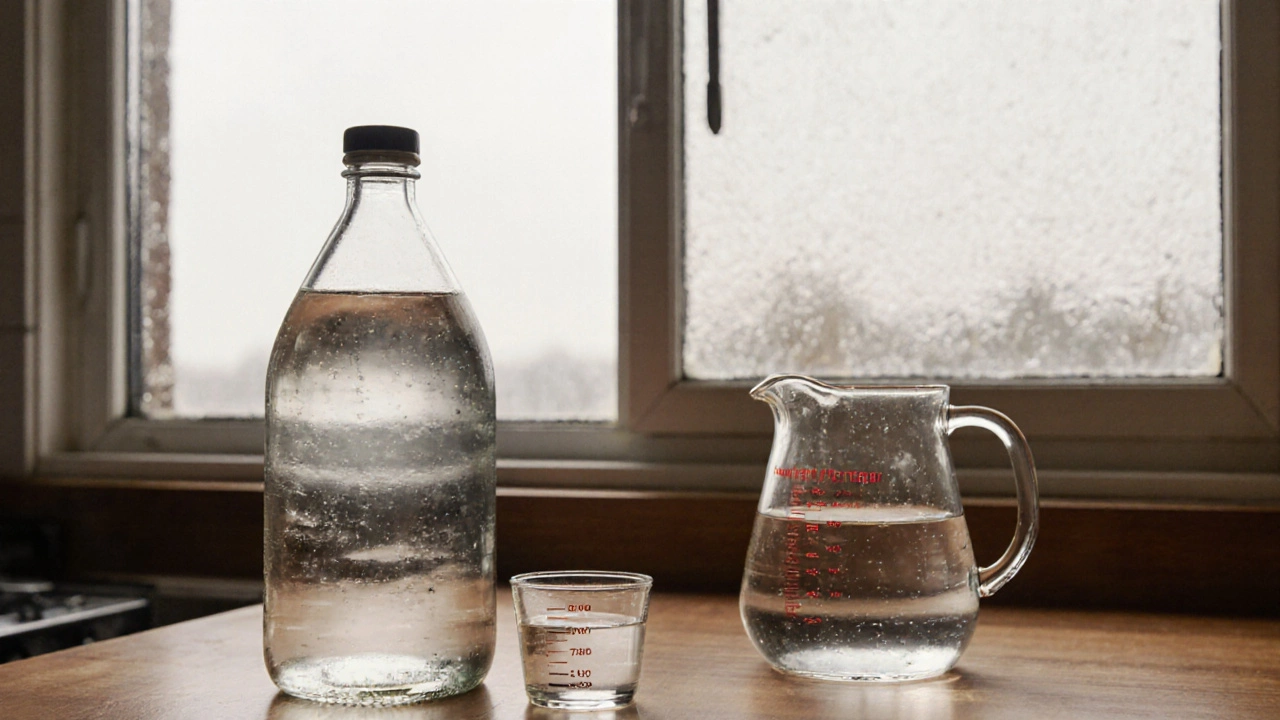DIY glass cleaner
When you start working with DIY glass cleaner, a homemade mixture using everyday items to achieve streak‑free windows and mirrors. Also known as home glass wash, it lets you ditch expensive store‑bought products. The formula often draws on vinegar, a mild acid that cuts grime without leaving residue and baking soda, a gentle alkaline powder that lifts stubborn spots. Together they create a safe, low‑cost solution that works on glass, tiles, and even stainless steel.
Why go DIY? First, you control the ingredients, so you avoid harsh chemicals that can fog up lenses or irritate skin. Second, the cost per bottle drops to a few pennies, which adds up when you clean a whole house. Third, you reduce plastic waste by refilling the same spray bottle again and again. In short, DIY glass cleaner is an eco‑friendly choice that also protects your wallet.
Key ingredients and how they work together
The backbone of most recipes is white distilled vinegar, which dissolves mineral deposits and soap scum. Because it’s acidic, it breaks down the film that causes streaks. Adding a few drops of dish soap introduces surfactants that lower surface tension, letting the solution spread evenly. For extra polishing power, a pinch of baking soda, which acts as a mild abrasive helps lift stuck‑on grime without scratching the glass.
Another useful add‑on is a splash of rubbing alcohol. It speeds up drying time, so you’re left with a dry, crystal‑clear pane. If you prefer a fragrance‑free mix, just skip the essential oils; the vinegar scent evaporates quickly. The recipe is flexible: a common ratio is one part vinegar, one part water, a few drops of dish soap, and an optional quarter‑cup of alcohol.
DIY glass cleaner encompasses homemade recipes, safe ingredients, and simple tools. It requires only a spray bottle, a funnel, and a microfiber cloth. The process enables anyone to achieve professional‑grade shine without hiring a pro.
Now that you know what goes into the mix, let’s talk about application. Spray the solution on the glass surface, let it sit for a few seconds to break down dirt, then wipe with a clean microfiber cloth in a circular motion. Finish with a vertical swipe to catch any remaining streaks. For large windows, work from top to bottom to prevent drips on already cleaned areas.
Eco‑friendly cleaning influences DIY glass cleaner by encouraging the use of biodegradable ingredients and reusable tools. This mindset also pushes you to pick up extra tips, like cleaning your cloths in hot water to keep them effective. Over time, the habit of making your own cleaner spills over to other tasks – countertops, tiles, even stainless steel appliances.
Many people wonder if a DIY mix can handle tough baked‑on grease on oven doors. The answer is yes, when you add a bit more vinegar and a sprinkle of baking soda, you get a foaming action that lifts the grease. The same principle works on bathroom mirrors, where toothpaste marks can disappear with a quick wipe after the spray.
Safety matters, too. Always test the solution on a small, hidden spot first, especially on tinted or treated glass. If you see any discoloration, dilute the mix with more water. Keep the spray bottle out of reach of children and label it clearly.
By sticking to these basics, you’ll find that a DIY glass cleaner isn’t just a one‑off hack – it’s a reliable part of your regular cleaning routine. Below, you’ll discover a range of articles that dive deeper into specific recipes, seasonal cleaning schedules, and troubleshooting tips for common glass‑related woes. Ready to explore the full collection?

Can Straight Vinegar Clean Windows? A Complete DIY Guide
Discover how to turn plain vinegar into an effective, eco‑friendly window cleaner, with step‑by‑step instructions, safety tips, and alternatives.
Read More